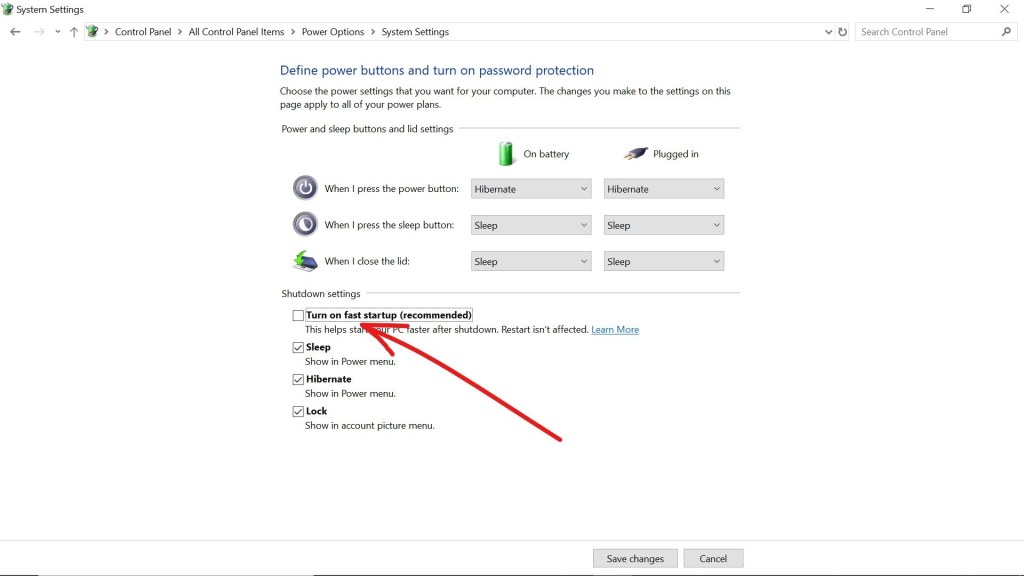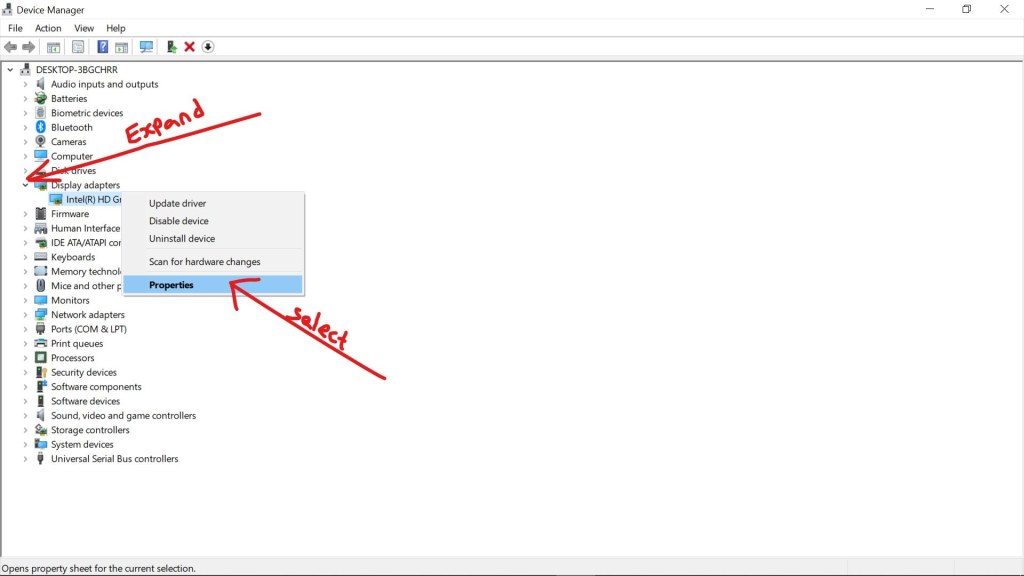Desktop PC Randomly Shuts Off: Causes, Solutions, and Prevention
Greetings, Readers! Today, we will discuss a common and frustrating issue that many computer users face: desktop PCs randomly shutting off. This unexpected and abrupt shutdown can cause data loss, hinder productivity, and impact the overall performance of the system. In this article, we will explore the various causes behind this problem, provide effective solutions, and offer preventive measures to ensure a stable and reliable computing experience. So, let’s dive in and uncover the mysteries of desktop PC shutdowns.
Table of Contents:
Introduction
Understanding the Problem
Possible Causes
Identifying the Culprit
Effective Solutions

Image Source: freecodecamp.org
Preventive Measures
Advantages and Disadvantages
Frequently Asked Questions
Conclusion
Final Remarks

Image Source: freecodecamp.org
Introduction:
Desktop PC shutdowns can be frustrating and disruptive, impacting both personal and professional activities. Understanding the root causes behind this problem is crucial for finding effective solutions. In this section, we will explore the various factors that can lead to random shutdowns, including hardware issues, software conflicts, overheating, and power supply problems.
1. Hardware Issues: Faulty components, such as a failing power supply unit (PSU), defective motherboard, or faulty RAM, can cause unexpected shutdowns. It is essential to identify and address any hardware-related problems to ensure a stable system.
![desktop pc randomly shuts off - SOLVED] PC Randomly Turns Off - What to Do? — Auslogics Blog desktop pc randomly shuts off - SOLVED] PC Randomly Turns Off - What to Do? — Auslogics Blog](https://desktop-world.info/wp-content/uploads/2023/09/solved-pc-randomly-turns-off-what-to-do-auslogics-blog.jpg)
Image Source: ytimg.com
2. Software Conflicts: Incompatible or outdated software, conflicting applications, or corrupted system files can also trigger random shutdowns. Proper software maintenance and regular updates are essential for preventing such issues.
3. Overheating: Excessive heat can damage computer components and force the system to shut down as a protective measure. Overheating can be caused by inadequate cooling, dust buildup, or improper placement of the computer. Proper cooling and regular cleaning are crucial for preventing overheating-related shutdowns.
4. Power Supply Problems: Insufficient power supply, power surges, or faulty wiring can cause sudden shutdowns. Ensuring a stable and reliable power source is essential for the smooth operation of a desktop PC.
5. Viruses and Malware: Malicious software can disrupt the normal functioning of a computer and lead to unexpected shutdowns. Regular antivirus scans and proper internet security measures are vital for preventing virus-related shutdowns.
6. Operating System Errors: System errors, such as blue screens or system crashes, can cause sudden shutdowns. Keeping the operating system up to date and performing regular maintenance can help prevent these issues.
7. User Error: Accidental actions, such as mistakenly pressing the power button or changing system settings, can lead to unexpected shutdowns. Being cautious and double-checking actions can help avoid user-induced shutdowns.
Understanding the Problem:
Now that we have explored the various causes of random shutdowns in desktop PCs, it is important to understand how to identify the culprit behind the issue. In this section, we will discuss methods for troubleshooting and diagnosing the problem.
1. Hardware Diagnostics: Running hardware diagnostic tests can help identify faulty components. Tools like Memtest86 or manufacturer-specific diagnostics can assist in detecting RAM, motherboard, or power supply issues.
2. Software Analysis: Examining system logs, error messages, and event viewer entries can provide insights into software conflicts or system errors. Using system monitoring tools can help track resource usage and identify problematic applications.
3. Temperature Monitoring: Monitoring the temperature of computer components, such as the CPU and GPU, can reveal overheating issues. Software utilities like HWMonitor or SpeedFan can provide real-time temperature readings.
4. Power Supply Check: Verifying the stability and efficiency of the power supply unit can help rule out power-related problems. Using a power supply tester or consulting a professional can assist in this process.
5. Virus and Malware Scans: Performing thorough scans with reputable antivirus software can detect and eliminate any malicious programs that may be causing shutdowns.
6. System Restore: Restoring the system to a previously stable state can help resolve software conflicts or operating system errors.
Possible Causes:
While we have discussed several potential causes of random shutdowns, it is important to delve deeper into each factor to understand how it affects the stability of a desktop PC. Let’s explore these causes in detail:
1. Hardware Issues: Faulty power supply units can fail to supply adequate power to the system, leading to shutdowns. Similarly, a defective motherboard can cause instability and unexpected shutdowns.
2. Software Conflicts: Incompatible or outdated software can conflict with the operating system, resulting in random shutdowns. Additionally, corrupted or missing system files can disrupt the normal functioning of a computer.
3. Overheating: Excessive heat can damage computer components, prompting the system to shut down as a precautionary measure. Insufficient cooling, clogged air vents, or improper placement of the computer can contribute to overheating.
4. Power Supply Problems: Inadequate power supply or power surges can cause the desktop PC to shut down abruptly. Faulty wiring or an unreliable power source can also contribute to this issue.
5. Viruses and Malware: Malicious software can infiltrate a computer, triggering unexpected shutdowns. Viruses, Trojans, or other forms of malware can disrupt system processes and compromise the stability of the PC.
6. Operating System Errors: System errors, such as blue screens or crashes, can force the computer to shut down. These errors may occur due to software conflicts, outdated drivers, or corrupted system files.
Effective Solutions:
Now that we understand the possible causes of random shutdowns, let’s explore effective solutions to address this issue:
1. Hardware Troubleshooting: Identifying and replacing faulty hardware components, such as the power supply unit or RAM, can resolve shutdown problems caused by hardware issues.
2. Software Updates and Maintenance: Keeping the operating system, drivers, and applications up to date can prevent software conflicts and ensure compatibility.
3. Cooling and Cleaning: Regularly cleaning the computer, ensuring proper airflow, and using cooling pads or fans can prevent overheating-related shutdowns.
4. Stable Power Source: Using a reliable UPS (uninterruptible power supply) or surge protector can protect the PC from power-related shutdowns caused by outages or surges.
5. Antivirus and Firewall: Installing reputable antivirus software and enabling a robust firewall can detect and prevent virus-induced shutdowns.
6. System Optimization: Performing regular maintenance tasks, such as disk cleanup, defragmentation, and system scans, can optimize the performance of the computer and reduce the likelihood of shutdowns.
Preventive Measures:
Prevention is always better than cure. To minimize the chances of random shutdowns, follow these preventive measures:
1. Use Reliable Hardware: Invest in quality components from reputable manufacturers to reduce the risk of hardware-related shutdowns.
2. Regular Updates: Keep the operating system, drivers, and software up to date to ensure compatibility and security.
3. Adequate Cooling: Ensure proper airflow, clean the computer regularly, and consider additional cooling solutions to prevent overheating.
4. Stable Power Supply: Use a stable power source, such as a UPS, and protect the system from power outages and surges.
5. Safe Browsing Habits: Avoid suspicious websites and downloads to minimize the risk of malware infections.
6. Regular Backups: Create regular backups of essential data to prevent loss in case of unexpected shutdowns or system failures.
Advantages and Disadvantages:
Like any technological issue, random shutdowns in desktop PCs have their advantages and disadvantages. Let’s explore them in detail:
Advantages:
1. System Stability: Resolving the causes of random shutdowns can lead to a stable and reliable computing experience.
2. Data Protection: Preventing unexpected shutdowns reduces the risk of data loss and damage to important files.
3. Increased Productivity: A stable system allows users to work smoothly without interruptions caused by unexpected shutdowns.
Disadvantages:
1. Time-consuming: Troubleshooting and identifying the causes of random shutdowns can be a time-consuming process.
2. Components Replacement: Hardware-related issues may require replacing faulty components, which can be costly.
3. Potential Data Loss: If not properly backed up, unexpected shutdowns may result in data loss.
4. Risk of Damage: Overheating caused by dust buildup or inadequate cooling can lead to permanent damage to computer components.
Frequently Asked Questions:
1. What should I do if my desktop PC randomly shuts off?
– Start by checking the power supply, cleaning the internals, and updating software. If the issue persists, consider seeking professional help.
2. Can a virus cause random shutdowns?
– Yes, viruses and malware can disrupt system processes and lead to unexpected shutdowns. Use reputable antivirus software to detect and remove any malicious programs.
3. How can I prevent overheating in my desktop PC?
– Ensure proper airflow, clean the computer regularly, consider additional cooling solutions, and avoid blocking air vents.
4. Why is it important to keep the operating system and software up to date?
– Updates often include bug fixes, security patches, and compatibility improvements, which can prevent software conflicts and ensure system stability.
5. Can faulty RAM cause random shutdowns?
– Yes, faulty RAM can cause system instability and lead to unexpected shutdowns. Use diagnostic tools to test and identify any faulty memory modules.
Conclusion:
In conclusion, random shutdowns in desktop PCs can be caused by a variety of factors, including hardware issues, software conflicts, overheating, power supply problems, viruses, and user errors. By understanding the causes and identifying the culprits, users can implement effective solutions and preventive measures to minimize the occurrence of random shutdowns. Remember to keep your system updated, clean, and adequately cooled. By taking these steps, you can ensure a stable and reliable computing experience.
Final Remarks:
It is important to note that while the solutions and preventive measures provided in this article are effective in most cases, some issues may require professional assistance. If you are unable to resolve the random shutdown problem on your own, consider consulting a qualified technician. Additionally, always back up your important data to prevent loss in case of unexpected shutdowns. Stay vigilant and proactive to maintain a stable and secure desktop PC environment.